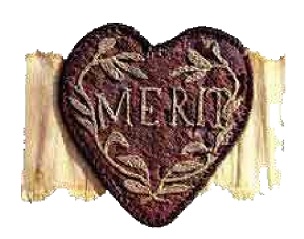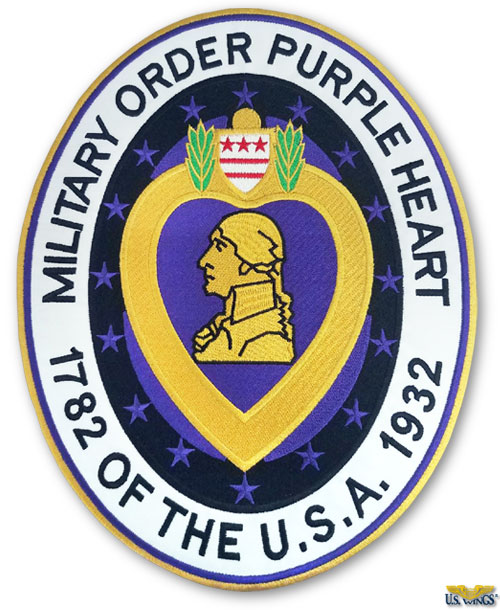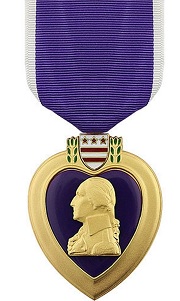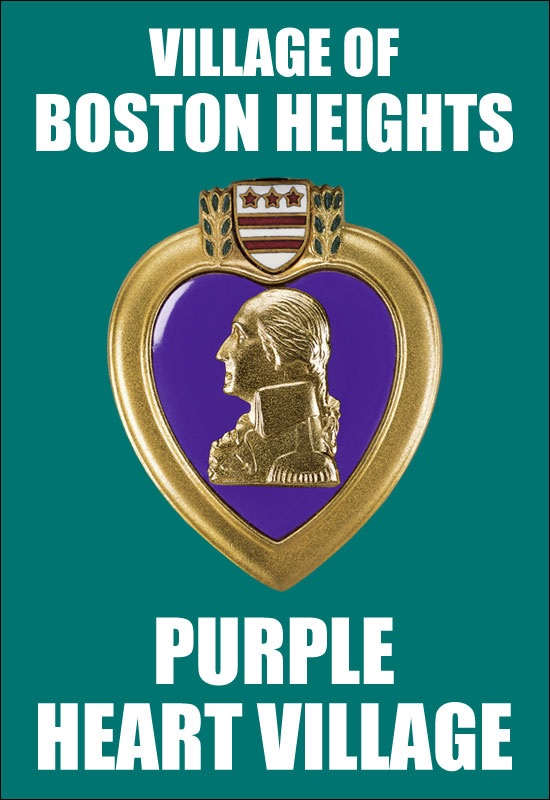The Purple Heart: Past and Present
general George washington & the badge of military merit
After Congress took away the power to grant commissions in the field and once the war was winding down, the Commander in Chief devised ways to honor the courage of his enlisted men and non-commissioned officers. On the 7th of August, 1782, George Washington, the Commander in Chief of the Continental Army, issued a general order that established the Honorary Badge of Distinction and the Badge of Military Merit.
General George Washington wrote:
“The General ever desirous to cherish a virtuous ambition in his soldiers, as well as to foster and encourage every species of Military Merit, directs that whenever any singularly meritorious action is performed, the author of it shall be permitted to wear on his facings over the left breast, the figure of a heart in purple cloth or silk, edged with narrow lace or binging. Not only instances of unusual gallantry, but also of extraordinary fidelity and essential service in any way shall meet with a due reward.”
With this, the Badge of Merit was established. This badge, in shape and color, is what inspired the modern Purple Heart. The person who inspired the badge is not known. Some think that Pierre L’Enfant, the architect of Washington DC, Martha Washington, or even George Washington himself designed it. The heart is to represent courage and devotion. The color purple was associated with royalty and would stand out on any uniform.
The Badge or Merit or Purple Heart is the oldest known United States military decoration that is still in use. Though practices in Europe were to only honor high-ranking officers who had achieved victory, General Washington thought that the “road to glory in a patriot army and a free country is…open to all.”
In order to determine who would receive the badge, Washington assembled a board of military officers who would convene whenever the Adjutant General had recommendations for them to consider. Unfortunately, the board of officers never met because they received no recommendations. We suspect that the increasing mutiny among the officer corps is why the Adjutant General had no one to recommend. During that time, many officers were also preoccupied with problems with their pay and pension to worry about writing recommendations for this medal.
After months with no recommendations and news of peace reaching headquarters, Washington took actions to create a new board and demanded results in days before the Continental Army began to disband. History shows that the first three people who received the Badge of Military Merit during the American Revolutionary War, all of which were non-commissioned officers.
On May 3, 1783, Sergeant William Brown and Sergeant Elijah Churchill were awarded the Badge of Military Merit. Brown was awarded for amazing heroism at the Battle of Yorktown. Churchill was awarded for his successful commando-style raids during the war. On June 10, 1783, Sergeant Daniel Bissell was awarded the Badge of Military Merit by General Washington himself. Bissell was one of Washington’s most important and successful spies. Researchers have discovered that other soldiers were awarded the Badge of Military Merit. Documents show that Peter Shumway, John Sithins and William Dutton also received the Badge of Military Merit, but we do not know what outstanding acts of courage were made to be honored. The “Book of Merit,” a book with all the recipient’s names and heroic deeds were to be recorded, has been lost for over 200 years.
With intentions for the Badge of Military Merit to be made permanent, it lapsed after the army was disbanded in June of 1783. At the conclusion of the Revolutionary War, no federal medals were awarded to American servicemen until the Navy Medal of Honor, created in 1861 during the Civil War.
THE PURPLE HEART MEDAL
In 1927, the Army Chief of Staff General Charles Pelot Summerall tried to revive the Badge of Military Merit. The bill was later withdrawn. In 1931, General Douglas MacArthur worked in secret on a new design of a revived medal, later known as the Purple Heart medal.
The Purple Heart medal was established on February 22, 1932, by the Executive Order of the President of the United States. It was revived on the 200th Anniversary of George Washington’s birth to commemorate him and his military achievements.The medal is to be awarded to soldiers, upon request, who have been awarded the Meritorious Service Citation Certificate, Army Wound Ribbon, or authorized to wear the Wound Chevrons all the way back to April 5, 1917. The first Purple Heart medal was awarded to General MacArthur.
During the early days of the medal, it was awarded to both for wounds received in action against the enemy and for meritorious performance of duty. With the Legion of Merit, the awarding of the Purple Heart for meritorious service was discontinued. With the Executive Order 9277 the decoration was applied to all services. It also authorized the award only for wounds received.






